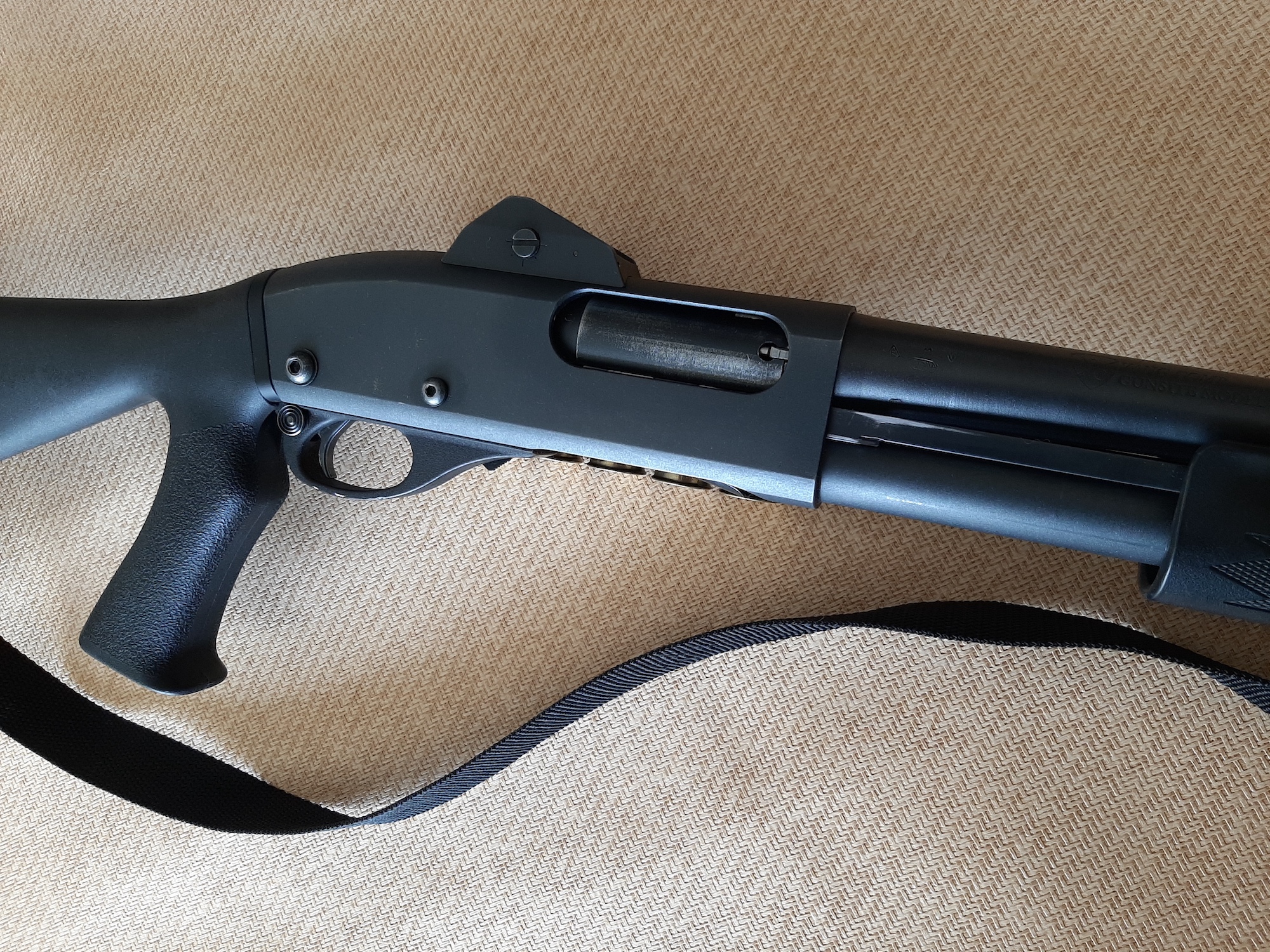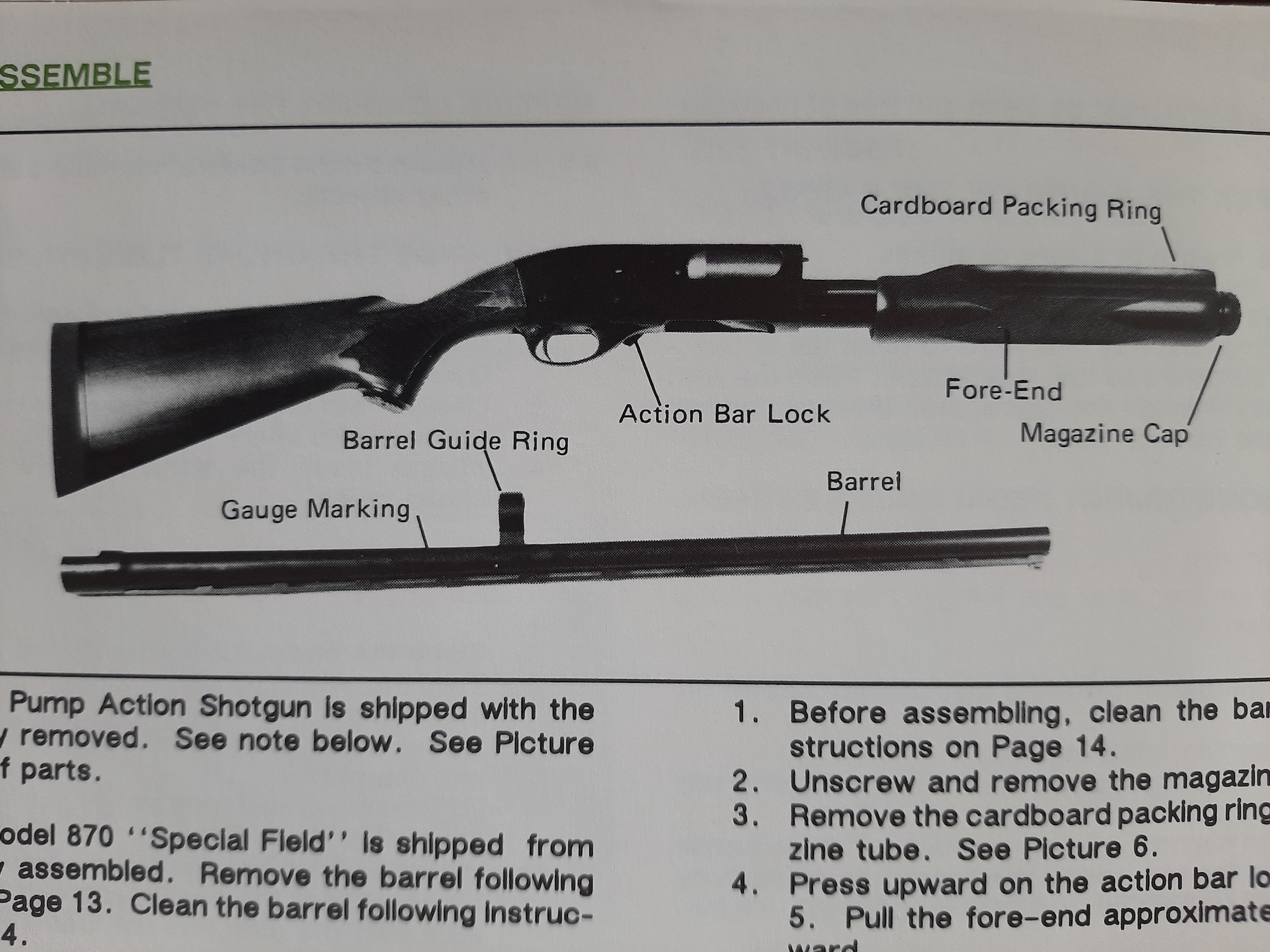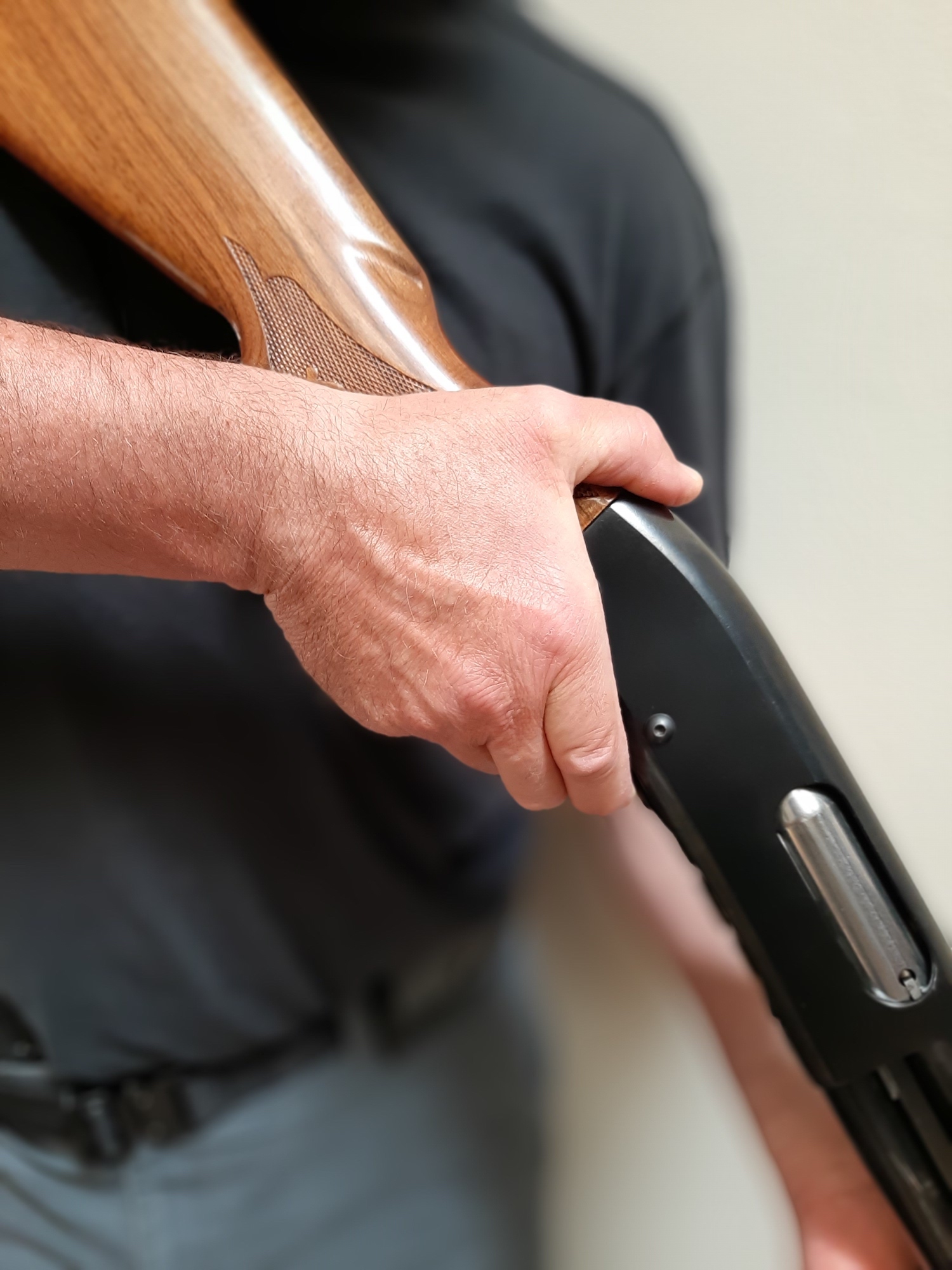
20220607_151127
The NRA Law Enforcement Handgun/Shotgun Instructor Manual defines two methods of “cruiser carry” for pump-action shotguns.
Cruiser Ready: Safety ON, chamber empty, the action is closed and unlocked (bolt forward and trigger pulled to drop the hammer); the magazine tube is loaded.
Cruiser Safe: Safety ON, chamber empty, the action is closed and locked (bolt forward and the hammer is cocked); the magazine tube is loaded.
Cruiser Ready allows grabbing the shotgun and racking the fore-end to be ready to fire; the officer must only manipulate the safety to fire the gun. Some trainers even advocate leaving the safety off to eliminate any delays if the shotgun is needed immediately.

This 1991 Remington owner’s manual references the “Action Bar Lock”. It’s more commonly known as the “Action Release”.
The Police Academies I attended in 1988 and 1991 both taught Cruiser Ready, and I accepted it as gospel as a new officer.
Using Cruiser Ready minimizes the steps to ready the gun from storage but complicates matters when returning it to a safe condition to put back in the patrol vehicle. The chamber must be cleared, and the trigger must be pulled to unlock the action. Using the trigger to perform a function other than firing the gun creates a mental exception to rule #3 and gives Murphy a chance to succeed. Because human beings are imperfect and tend to make messes of things under stress, Cruiser Ready carry creates a dangerous situation every time the shotgun is stored. The danger increases when the officer unloads the gun after the adrenaline dump of a high-risk encounter.

• Open the action with the action release
• Ease the fore end back just far enough to pluck the chamber round out*
• Shut the action
• Put the safety on
*Notice how the support hand little finger controls the rearward travel of the fore end to prevent a round exiting the magazine onto the shell carrier.
As the lead firearms instructor for my agency, one of my duties was to review all reported negligent discharges (NDs). Incidents were analyzed to ensure that our gun handling procedures were best practices and that they were being followed. Most of our NDs happened when an officer or recruit intentionally pressed the trigger on what they thought or assumed was an empty chamber.

Using the Action Release to ready the pump gun from Cruiser Safe is a matter of training. Since Murphy gets his say and people screw up, it’s safer than Cruiser Ready.
Off the top of my head, I remember only one incident where an Officer unintentionally fired a round. I recall six incidents where officers or recruits fired when they expected a “click.” Three of the six were officers/recruits restoring shotguns to Cruiser Ready configuration. One was from a senior officer, and the others were done by recruits. At that time, nearly every stage of our shotgun courses began from a half load. Recruits and officers returned to Cruiser Ready several times during each qualification shoot.
After several recruit schools’ worth of pondering and many discussions with other instructors, I decided to change our doctrine and training with the shotgun. We started teaching Cruiser Safe, meaning officers had to use the action release to initially chamber a round in the shotgun with the action locked. Courses of fire were changed to reflect the actual deployment of the shotgun – the first stage of fire would start with shells in the magazine tube but an empty chamber; most subsequent stages would be fired from a fully loaded configuration. It worked well with new recruits with no shotgun experience; negligent discharges in initial shotgun training disappeared.
The change was resisted by some seasoned troops with years of myelination with Cruiser Ready carry. I often heard the “but I wasn’t trained that way” mantra. Interestingly, the loudest grumbling came from the officers who were the poorest 870 manipulators and avoided their shotguns like the plague. Officers were permitted to start qualification stages, with shells in the magazine tube, at a low ready with their trigger finger on the action release. The officer racked the action on the fire command and removed the safety as the sights came on target. Repetition gave confidence in the technique, and the complaining eventually ceased.
The change was also beneficial with the vertical locking racks we used in our patrol cars.
Shotguns secured in the rack with the action unlocked would have the fore-ends jarred partially open by everyday driving. If the officer removed the shotgun from the rack and attempted to select load a slug into the magazine, the unlocked action would prevent it. Precious time was wasted as the officer tried to diagnose the problem. Cruiser Safe carry eliminated that issue.
The 870 and other pump guns suitable for police use give the user a choice on how to release the action. Press the trigger or press the action release. Selecting the trigger carelessly allows it to potentially do what triggers are designed to do – make guns go bang. The trigger of a loaded shotgun should not be pressed just to release the action. Choosing the action release will never result in a loud noise and lethal projectiles being launched.

Officers were taught to start half loaded stages of fire with the index or middle finger on the action release. On the fire command, the action release was depressed, the fore end worked, and the safety taken off as the sights were brought on target.
To review, when the shotgun is in the Cruiser Safe mode, to put it into action – you depress the action release at the front of the trigger guard, then you rack the action all the way to the rear and forward. Your trigger finger rests on the safety button. The safety only comes off as the shotgun comes onto the target or threat and you have made the decision to shoot.
Cruiser Safe carry dramatically reduces the risk of negative outcomes when unloading the shotgun- it’s worth considering.
Sources
National Rifle Association Law Enforcement Handgun/Shotgun Instructor Manual Edition 6.1 copyright 2006
Remington Model 870 Pump Action Shotgun Instruction Book rev. 06/91
NMDPS Police Shotgun Operator Course Manual 03/13














